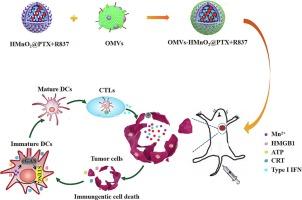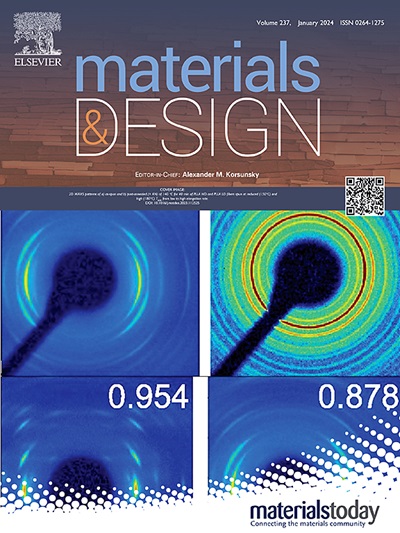Dual-drug loaded manganese dioxide nanoparticles coated with bacterial outer-membrane vesicles for chemo-immunotherapy in lung cancer
IF 7.6
2区 材料科学
Q1 MATERIALS SCIENCE, MULTIDISCIPLINARY
引用次数: 0
Abstract
Lung cancer is the most leading cause of cancer death. Traditional chemotherapy has unavoidable drawbacks of nonspecific tumor targeting, high toxicity, and poor therapeutic efficiency. Nanocarriers can achieve accurate delivery and reduce adverse reactions of drugs, which have received extensive attention. In this work, hollow manganese dioxide (HMnO2) nanoparticle (NP) that is highly responsive to tumor microenvironment, was simultaneously loaded with paclitaxel (PTX), a chemotherapy drug, and imiquimod (R837), a toll-like receptor 7 agonist. Those NPs were then coated with bacterial outer-membrane vesicles (OMVs-HMnO2@PTX + R837 NPs), whose surface proteins could act as tumor-specific antigens. The obtained nanovaccine inherited superior tumor-targeting capacity of OMVs and promoted retention in tumors. As a result, intravenous injection of the nanovaccine led to remarkable tumor growth inhibition. Furthermore, we found that the nanovaccine effectively boosted dendritic cells maturation and increased cytotoxic T lymphocytes infiltration. Taken together, these results demonstrated the great potential in applying OMVs-enveloped nano-activator in cancer chemo-immunotherapy.

涂有细菌外膜囊泡的双药负载二氧化锰纳米粒子用于肺癌化疗免疫疗法
肺癌是导致癌症死亡的最主要原因。传统化疗不可避免地存在非特异性肿瘤靶向、毒性大、疗效差等缺点。纳米载体可实现精准给药,减少药物不良反应,受到广泛关注。在这项研究中,中空二氧化锰(HMnO2)纳米粒子(NP)对肿瘤微环境反应灵敏,可同时负载化疗药物紫杉醇(PTX)和类收费受体7激动剂咪喹莫特(R837)。然后在这些 NPs 上包覆细菌外膜囊泡(OMVs-HMnO2@PTX + R837 NPs),其表面蛋白可作为肿瘤特异性抗原。所获得的纳米疫苗继承了 OMVs 卓越的肿瘤靶向能力,并促进了其在肿瘤中的保留。因此,静脉注射纳米疫苗可显著抑制肿瘤生长。此外,我们还发现纳米疫苗能有效促进树突状细胞成熟,增加细胞毒性 T 淋巴细胞浸润。综上所述,这些结果表明了将 OMV 开发的纳米激活剂应用于癌症化疗免疫疗法的巨大潜力。
本文章由计算机程序翻译,如有差异,请以英文原文为准。
求助全文
约1分钟内获得全文
求助全文
来源期刊

Materials & Design
Engineering-Mechanical Engineering
CiteScore
14.30
自引率
7.10%
发文量
1028
审稿时长
85 days
期刊介绍:
Materials and Design is a multi-disciplinary journal that publishes original research reports, review articles, and express communications. The journal focuses on studying the structure and properties of inorganic and organic materials, advancements in synthesis, processing, characterization, and testing, the design of materials and engineering systems, and their applications in technology. It aims to bring together various aspects of materials science, engineering, physics, and chemistry.
The journal explores themes ranging from materials to design and aims to reveal the connections between natural and artificial materials, as well as experiment and modeling. Manuscripts submitted to Materials and Design should contain elements of discovery and surprise, as they often contribute new insights into the architecture and function of matter.
 求助内容:
求助内容: 应助结果提醒方式:
应助结果提醒方式:


